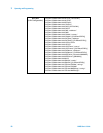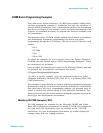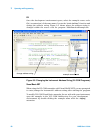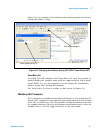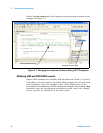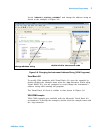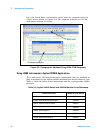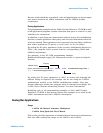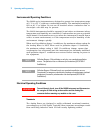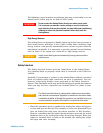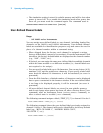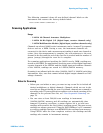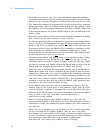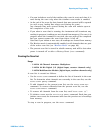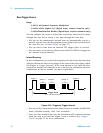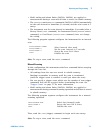
66 L4400 User’s Guide
3 Operating and Programming
Environmental Operating Conditions
The L4400 series instruments are designed to operate in a temperature range
of 0 °C to +55 °C with non- condensing humidity. The maximum humidity is
80% at 40 °C or higher. Do not use in locations where conductive dust or
electrolytic salt dust may be present.
The L4400 instruments should be operated in an indoor environment where
temperature and humidity are controlled. Condensation can pose a potential
shock hazard. Condensation can occur when the instrument is moved from a
cold to a warm environment, or if the temperature and/or humidity of the
environment changes quickly.
When used in pollution degree 1 conditions, the maximum voltage rating for
the Analog Buses is 300V. When used in pollution degree 2 conditions,
the maximum voltage rating is 100V. If conditions change, ensure that
condensation has evaporated and the instrument has thermally stabilized
until pollution degree 1 conditions are restored before turning on power to
the equipment.
Electrical Operating Conditions
Tra nsients
The Analog Buses are designed to safely withstand occasional transient
overvoltages up to 1000 Vpeak. Typically, these transient overvoltages result
from switching inductive loads or from nearby lightning strikes.
NOTE
Pollution Degree 1: No pollution or only dry, non-conductive pollution
occurs. The pollution has no influence (on insulation) (IEC 61010-1
2nd Edition).
NOTE
Pollution Degree 2: Normally only non-conductive pollution occurs.
Occasionally, a temporary conductivity (leakage current between isolated
conductors) caused by condensation can be expected (IEC 61010-1
2nd Edition).
WARNING
To avoid electric shock, turn off the L4400 instrument and disconnect or
de-energize all field wiring to the modules and the Analog Bus
connector before removing any module or slot cover.



